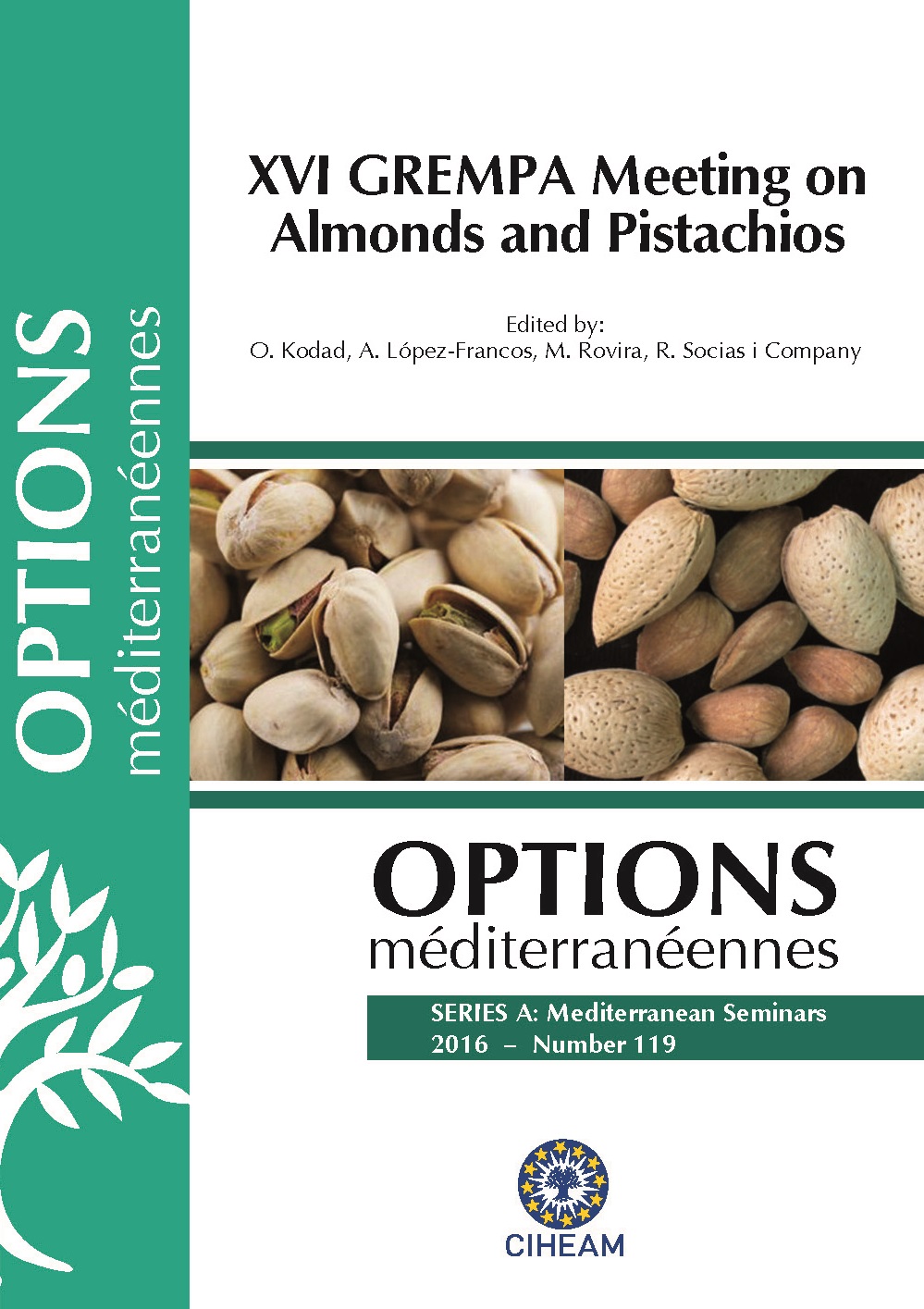| Article précédent | p. 59-63 | Article suivant |
Do almonds (Prunus amygdalus Mill.) alpha-amylase germinating seedlings have a beta/alpha fold?
Alpha-amylases have been well characterized in microorganisms and mammals. Very little is known about plant amylases. A previous study has allowed us to demonstrate the presence of alpha-amylase in germinated almond seedling (Prunus amygdalus Mill.) var ‘Tuono Mazzetto’ (Rosaceae family). The enzyme activity was optimal at the 4th day of germination with a Vmax = 2.5 UI and Km = 6.32 mM. In the current study, our aim was to propose in silico, by comparative modelling, a putative homologous model of three-dimensional (3D) structure of Prunus persica alpha-amylase, a species from the same family. The Prunus persica alpha-amylase structure shows a beta/alpha fold with small deviation from the template 3D coordinates even in the loop regions. The geometry of the catalytic site is preserved. The Ramachandran plot confirmed that the proposed model might be of a good quality. Alpha-amylase structure from Prunus Persica was also compared to a porcine (Sus scrofa) one, indicating the structural homology of these two different species. Combination of bioinformatics and biochemistry would allow us to better understand almond alpha amylase function.
Les alpha-amylases ont été bien caractérisées chez les micro-organismes et les mammifères. Peu d’informations concernent les amylases végétales. Une étude précédente nous a permis de mettre en évidence la présence d’alpha-amylase dans des graines d’amandier en germination (Prunus amygdalus Mill.) var. ‘Tuono Mazzetto’ (famille des Rosacées). Cette activité de l’enzyme est optimale au 4ème jour de germination avec une Vmax = 2,5 UI et km = 6.32 mM. Dans l’étude actuelle, notre objectif est de proposer in silico, par modélisation comparative, un modèle putatif d’homologie à trois dimensions (3D) de la structure d’une alpha-amylase de Prunus persica, une espèce de la même famille. La structure de l’alpha-amylase de Prunus persica présente un repliement bêta/alpha avec une déviation par rapport au modèle des coordonnées en 3D, même dans les régions en boucle. La géométrie du site catalytique est bien conservée. Le diagramme de Ramachandran montre que le modèle proposé est de bonne qualité. La structure de l’alpha-amylase de Prunus persica est également comparée à celle d’une espèce porcine (Sus scrofa) mettant en évidence l’homologie structurale de ces espèces différentes. La combinaison de la bioinformatique et de la biochimie nous permettrait de mieux comprendre le fonctionnement de l’alpha amylase d’amandier.
- [ Afficher ]
- [ Télécharger ]
- [ Exporter la citation ]
Vous pouvez télécharger la citation au format :
- [ Imprimer ]
-
Mots-clés
AMANDE, PRUNUS AMYGDALUS, PRUNUS PERSICACiter cet article
Hermi S., Bahri S. Do almonds (Prunus amygdalus Mill.) alpha-amylase germinating seedlings have a beta/alpha fold?. In : Kodad O. (ed.), López-Francos A. (ed.), Rovira M. (ed.), Socias i Company R. (ed.). XVI GREMPA Meeting on Almonds and Pistachios. Zaragoza : CIHEAM, 2016. p. 59-63. (Options Méditerranéennes : Série A. Séminaires Méditerranéens; n. 119). 16. Meeting of GREMPA (Groupe de Recherches Méditerranéennes pour l\'Amandier et Pistachier / Mediterranean Research Group for Almond and Pistachio), 2015/05/12-14, Meknes (Morocco) . http://om.ciheam.org/om/pdf/a119/00007364.pdf



